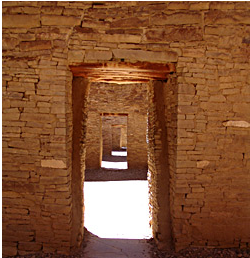Publication Date
5-1-2010
Abstract
This study examines the functional relationship between ceramic cooking vessel shape and subsistence and mobility using vessels from Navajo and Towa-speaking Puebloan groups from the Protohistoric period (A.D. 1450-1700) in the southwestern United States. Conical shape vessels are found in association with mobile foragers throughout the past. Navajo peoples produced Dinetah and Navajo Gray wares, both of which have conical bases. Towa-speaking Puebloan peoples from the Jemez and Pecos areas produced rounded-base cooking vessels. The Navajo and Towa-speaking Puebloans practice different subsistence and mobility strategies. The primary goal of this research was to determine if variation in cooking vessel form was the result of this cultural variation. This research employed reviews of available ethnohistorical and archaeological data, analysis of archaeological specimens, and experimental testing of reproductions. Ethnohistorical and archaeological data provide evidence for variation in types of food resources exploited, food preparation techniques, and mobility strategies. The seasonally mobile early Navajo depended heavily on wild plant resources and supplemented their diet with agricultural resources. The Towa-speaking Puebloan groups were primarily reliant on agricultural resources and occupied large year-round settlements with seasonal dispersal of a portion of the population to attend to agricultural fields. Analysis of archaeological specimens, using both whole vessels and sherds, showed substantive variation between the cooking vessels of the two groups that can potentially relate to transportability, thermal stress resistance, and thermal efficiency. Experimental testing of reproductions based on archaeological whole vessels also provided evidence for differences in strength, thermal stress resistance, and thermal efficiency. Results suggest that variation in cooking vessel form is more strongly related to variation in diet and cooking strategies than to mobility. Additional research is needed to further elucidate the cultural relationships examined here.
Keywords
Southwest Archaeology, Ceramics, Expermental Archaeology, prehistoric cooking vessels
Project Sponsors
Graduate Research and Development Fund (GRD) from the Graduate and Professional Student Association at the University of New Mexico and the National Science Foundation Dissertation Improvement Grant
Document Type
Dissertation
Language
English
Degree Name
Anthropology
Level of Degree
Doctoral
Department Name
Anthropology
First Committee Member (Chair)
Patricia L. Crown
Second Committee Member
James L. Boone
Third Committee Member
Ronald Towner
Fourth Committee Member
Eric Blinman
Recommended Citation
Helton-Croll, Claire Kathleen. "Why Conical Pots? An Examination of the Relationship Among Vessel Shape, Subsistence, and Mobility." (2010). https://digitalrepository.unm.edu/anth_etds/29

